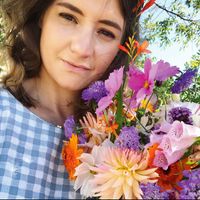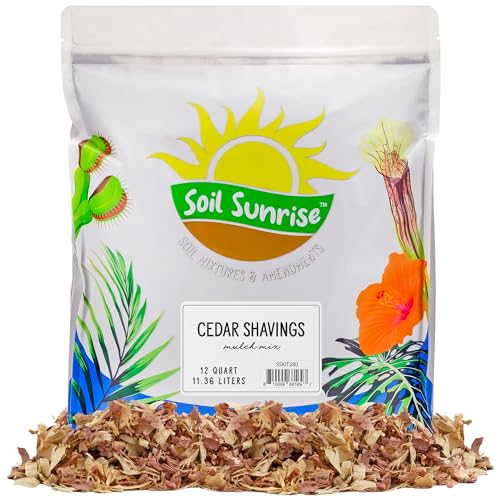How to overwinter geraniums – expert advice for looking after these tender perennials in the cold
Learn how to overwinter geraniums to ensure they bloom again next year


Rachel Bull
Learning how to overwinter geraniums is really handy for us gardeners to know, as it can save so much money and allows you to prolong the life of varieties you are particularly fond of.
Geraniums, or pelargoniums, are stalwarts of the summer garden. Available in an array of bold colors, and flowering continuously provided they are deadheaded, geraniums are perfect for bringing cheer and long-lasting color to hanging baskets, containers and borders.
Oftentimes, pelargoniums are treated as an annual, but they are in fact tender perennial plants. With the right care, you can keep them healthy over the winter, ready to explode into life again next spring. So, when it comes to overwintering your garden, here is everything you need to know about correctly protecting your geranium plants.

Why geraniums need winter protection
Planning a winter garden is vitally important when it comes to frost-sensitive plants. While they put on a long display, geraniums are frost tender, meaning that they will not survive harsh winters – so knowing how to overwinter geraniums is a must if you are keen on growing them.
Geraniums is the common name for pelargoniums and should not be confused with hardy geraniums or cranesbill which are a different type of plant and do not require overwintering.
Originating from South Africa, geraniums are happiest in the heat, and can tolerate periods drought with little water.
Geraniums, or pelargoniums, are hardy in USDA zones 9-12 in climates of between 20ºF to 50ºF and can survive to zone 7 to temperatures of -12ºF (0ºC) if protected.
Design expertise in your inbox – from inspiring decorating ideas and beautiful celebrity homes to practical gardening advice and shopping round-ups.
While they can survive light frosts (temperatures just below freezing), they will die if exposed to prolonged temperatures below freezing so need to be protected in these conditions.
You can treat geraniums like annuals, digging up the plants in fall and composting them and replacing them with new plants the following year. However, given the right care and treatment, they will flourish again the following year.
‘Keen enthusiasts keep their pelargoniums in growth during the winter and continue to feed and water but a few key points can be undertaken by anyone to keep your pelargoniums alive throughout the winter,’ explains David Taylor, Vice Chairman of the UK Pelargonium and Geranium Society.
There are different ways to overwinter geraniums. Potted and kept in the right conditions, the plants can be kept either growing or in a semi-dormant state over the winter, however they can also be overwintered in a dormant state and stored in bare-root form. Below we outline the two separate methods with help from the experts. Another alternative is to take cuttings from your geraniums when pruning them for the winter to create new plants for the following year.
Overwintering geraniums in pots

Often geraniums are grown in containers, and this is a great way to grow them if you are looking to overwinter them.
Move pots under cover
If your geraniums are already in pots, they can simply be moved under cover into a light, airy and frost-free place such as a greenhouse or conservatory before the frost arrives.
‘The best place would be a greenhouse and the ideal environment would be to have a heater in place to maintain temperatures above freezing when frost does threaten,’ says David Taylor.
If your geraniums have been grown in a border, you can dig these up, repot them and bring these pots undercover, too.
Cut plants back
Whether they are already potted or have been taken from the border, it is best to cut geraniums back before bringing them inside.
Firstly you should cut your plants back by about two thirds; if lifting from outdoor beds they may need to be cut down by three quarters. Only do this cutting when the roots are dry otherwise the remaining stems will die back.
‘It's also a good idea to remove any dead, damaged, and unhealthy areas you see. Make sure they are free from bugs, and then bring them in for the winter,’ says Drew Swainston, H&G content editor and gardening expert.
Reduce watering
Whilst under cover the geraniums are best kept in a semi-dormant state and so will not require feeding and will need less watering. ‘Put them in an area that gets partial sun and water them every 2-3 weeks, keeping them at around 50% humidity. Like most other plants, they go dormant through the winter to preserve their energy for the growing season,' adds Drew.

Drew qualified as a journalist and wrote for many websites and publications, before studying for a horticulture qualification. He worked as a professional gardener for several years, specializing in kitchen gardening. He's now bringing his expertise and passion to Homes & Gardens.
Overwintering geraniums in bare-root form

Geraniums can also be overwintered in bare-root form (with no soil around the roots) and stored in a dormant state ready for repotting in spring. This method will take up less space in comparison to overwintering geraniums in pots and is the best way to store large numbers of geraniums. This method does not require a greenhouse, as plants can be stored in a shed or garage.
Dig them up If using this method, dig them up and shake off all the soil from the roots, letting them dry out for a couple of days.
Cut back At this stage cut back the stems to around 4 inches (10cm), trim the roots to about 5cm and remove any leaves.
Store The next step is to ‘place them in a cool dry area in paper bags or cardboard boxes. We cover our plants with seasoned sawdust,’ explains is to Tammy Sons, CEO at TN Nursery near Nashville Tennessee. 'You can also wrap them in newspaper or cover them with potting compost.'
Pot up In early spring the bare-root plants that show signs of growth can then be potted up, but it’s recommended to soak the root for a few hours before doing so.
Cut back Once potted up, the plant should be cut back. ‘It’s necessary to cut back your geranium plants when you unpack them in the spring,’ advises Bryan Mackenzie, landscape designer and co-founder of bumpercroptimes.com. ‘You have to cut all the stems back to healthy-looking green growth. It’s also a good idea to trim off all the roots that are significantly longer than the others,’ he adds. This is different to deadheading geraniums in summer to promote more blooms.
Harden off The pots can then be placed in a sunny, frost-free spot to kick start growth and gradually hardened off after the risk of frost has passed before being finally brought outside into the garden ready for its summer display.

Tammy Sons is a plant expert, garden writer, and educator. Tammy is the CEO and founder of TN Nursery, a thriving online plant nursery based in Altamont, Tennessee. She is also a prolific writer, sharing her knowledge through articles on various gardening topics, including plant care, sustainable landscaping, and the latest trends in horticulture.
FAQs
Can I overwinter geraniums in an unheated greenhouse?
Whilst a heated greenhouse is preferable, ideally set to a minimum of 46ºF (8ºC), you can overwinter potted geraniums in an unheated greenhouse, if doing this, keep it well insulated with bubble wrap or the like and cover plants with fleece when very cold weather threatens.
If you don’t have a greenhouse that geraniums can be kept in a conservatory, but the preference would be one that is unheated as if it is too warm you may get a lot of lanky growth due to the low light levels in the winter.
It doesn't take too much time and effort to overwinter pelargoniums, but it's so worth it in my opinion, especially if you have these beautiful flowers growing in abundance in hanging baskets or window boxes.
There are lots of other potted plants to bring indoors in November, to give them time to acclimatize as the outside temperatures are dropping.

Pippa is a contributor to Homes & Gardens. A graduate of Art History and formerly Style Editor at Period Living, she is passionate about architecture, creating decorating content, interior styling and writing about craft and historic homes. She enjoys searching out beautiful images and the latest trends to share with the Homes & Gardens audience. A keen gardener, when she’s not writing, you’ll find her growing flowers on her yard for styling projects.
- Rachel BullHead of Gardens


